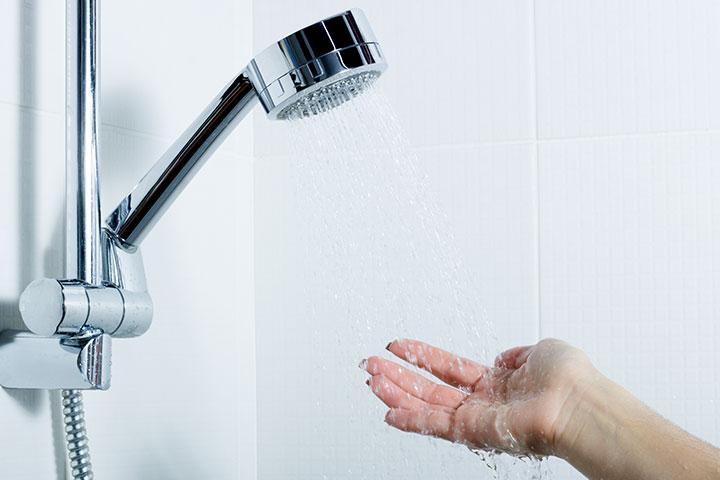Do you always have dry, itchy skin that doesn’t seem to go away? Does your hair feel limp and lifeless? Do you usually have soap scum or residue from your water? If you continuously notice one or more of the effects described above, you may be washing under a shower that lacks a shower filter. But…what is a shower filter and do you necessarily need to have one?
What Is A Shower Head Filter?
Most people automatically assume that the use of water filters and water treatment is associated mainly with drinking water. With this widespread view, it is possible not to have ever heard of shower filters. So is a shower filter worth it? and how essential is it for your shower system?
A shower head filter is a filter system installed in the shower to ensure that any water flowing through the shower receives adequate treatment before reaching the skin. Why is this important? Here’s the thing: the body absorbs water, chemicals, and other contaminants while we shower because of the pore-opening effect of warm water and steam. The major areas that could be potentially affected are the skin and hair. The presence of some chemicals such as chlorine in the shower water can irritate the skin and damage to the hair. When these potentially harmful chemicals gently seep through the body’s largest organ every day, it becomes something to worry about.
Why Are Shower Head Filters Necessary?
Shower filters are installed to remove chlorine and chloramines from shower water. Chlorine and chloramines are skin-damaging chemicals that permeate the skin and hair fibers. While many people filter drinking water to get rid of these chemicals, they completely ignore the idea of filtering their shower water.
What Are The Effects Of Chlorine And Chloramine On The Body?
Why is it important to remove chlorine and chloramine from shower water? The answer is quite straightforward. Chlorine can agitate and aggravate skin conditions such as rashes, eczema, and acne. Chlorine can do this because it removes the protective oils from the skin, leaving the skin vulnerable to overexposure and damage that results in rough and itchy skin.
Chlorine also affects the hair in many ways. For example, people with dyed hair will experience a premature fading of the dye color, making their hair look flat and dull. When people wash their hair with chlorinated water, it makes the hair brittle, bone-dry, and stiff. The use of chlorinated water on the hair can also cause dandruff, even in pets. The mechanism of the harmful effects of chlorine on the hair is similar to that on the skin, with chlorine, the offending agent, removing the protective oils meant to keep the hair strong and healthy.
Therefore, if your water has high chlorine levels, you need a shower head filter to prevent the adverse effects described above.
How Do Shower Head Filters Work?
Here’s how shower filters work. Shower filters have filtration media such as Kinetic Degradation Fluxion (KDF), which reduce offending skin irritants like chlorine and chloramines from shower water. Removing the chlorine content from shower water makes the water much gentler on the skin and hair. De-chlorinated water also will no longer have that harsh chemical smell you once knew.
The Kinetic Degradation Fluxion is a standard filtration media comprising of granular zinc alloys that exchange contaminants in the water with electrons. This exchange leads to a chemical conversion of chlorine and other heavy metals into harmless materials that do not agitate or aggravate skin problems. These harmless materials include a major product, which is the chloride ion. Since chloride ions do not cause any detrimental effect on the hair or skin, the filter system successfully prevents skin or hair damage. This filter system is also popularly used to improve water taste as well.
KDF removes chlorine from water by transforming it into chloride ions, which are water-soluble and safe for the environment. The exact mechanism is as follows: the two different metals (copper and zinc) in KDF create an electrolytic or galvanic reaction, which turns chlorine into chloride as chlorinated water passes through the KDF filament. KDF is also excellent when it comes to eliminating heavy metals such as lead, iron, etc. Also, the KDF media even inhibits the growth of internal bacteria and prevents the build-up of any algae within the shower filter.
Aquasure Sparkle Series Decholrinating PH Balance Shower Head Filters utilize a multistage filtration system. Combining coconut shell carbon, KDF, and BioCeramic spheres for the perfect and invigorating shower experience.
Can Activated Carbon Filters Replace KDF in Shower Filters?
Although carbon filters are praised and famous for their efficiency at removing chlorine from water, their effectiveness decrease with increasing water temperature. Therefore, activated carbon filters are only ideal for application in drinking water because people mostly take cold water. However, since most people at one point or another will take hot showers, the use of carbon filters in the shower becomes a poor choice. When activated carbon blocks come in contact with hot water, the blocks release into the water whatever contaminants were previously enmeshed within the carbon media. But the use of KDR is advantageous because, unlike most filter media, the performance of KDF is not affected by water temperature.
Can A Shower Head Filter Remove Chloramines?
Not all shower filters can remove chloramines from water. Traditional shower filters, for example, are unable to eliminate or reduce the chloramine concentration in shower water because shower water moves too fast. For chloramine to be effectively removed from the water, the contact time with the filtration media must be sufficiently long. For chloramines to be adequately eliminated, one must pass water through more powerful filters. Examples of such filters include ultrafiltration units, reverse osmosis systems, or catalytic carbon exposure.
However, some shower filters are capable of reducing chloramine concentration in water. These shower filters are referred to as Vitamin C filters and are so-called because they neutralize chloramine with ascorbic acid. This pure pharmaceutical-grade ascorbic acid kept in a tube, dissolves when the shower water flows through it. Even when the contact time is limited, this type of filter can remove over 90% of chlorine and chloramine. However, these types of filters are more expensive than conventional shower filters such as carbon or KDF filters. A vitamin C filter has a lifespan that is highly dependent on how much chloramine is in the water and how often one uses the shower.
Do Shower Filters Reduce Water Pressure?
When installed correctly, shower head filters do not affect your shower’s water pressure and shower head flow. Shower filters usually retain water pressure and have a rating for a specific pressure range (generally between 20-100 psi). With a pressure of 40-80 psi, most shower filters can effectively filter water without reducing the water pressure. If your shower already has a pressure lower than 40 psi before installing a shower filter, likely, your shower will further lose pressure when you fix a shower filter. This reduction occurs because the effectiveness of shower filters are highly dependent on contact time. So, when your water is at low pressure, it will take longer to process it through the filter.
However, there are many specially designed “low pressure” shower filter models for homes with suboptimal water pressure. In these low-pressure power filter models, the filtration media is usually placed within the showerhead so that the water doesn’t have to pass through the filter before it reaches the showerhead.
How Long Does A Shower Filter Last?
A shower head filter, on average, will last for about six months. Nevertheless, a shower filter’s lifespan highly depends on how frequently it is used. Shower filters usually come rated with the specific capacity of water they can treat. So, while an average individual consumer may use 10,000 gallons of water for eight months to a year, it will not take a family of four that long. In the latter case, the effectiveness of the shower filter will wane much quicker.
Since no one generally monitors the number of gallons their showers use, the most effective method is to monitor the performance of your shower filter by keeping an eye out for tell-tale signs of chlorine seeping back into the shower. If, after a few months, you begin to notice that dry, itchy skin and limp hair, then you should probably replace your shower filter.
Conclusion
It is no news that most homeowners don’t know the dangerous chemicals present in their shower water simply because our drinking water tends to get all the attention. If you want to relax and unwind by stepping into your hot showers at the end of a busy day, you should invest in a shower head filter to ensure that the shower water doesn’t hurt your skin or hair!




